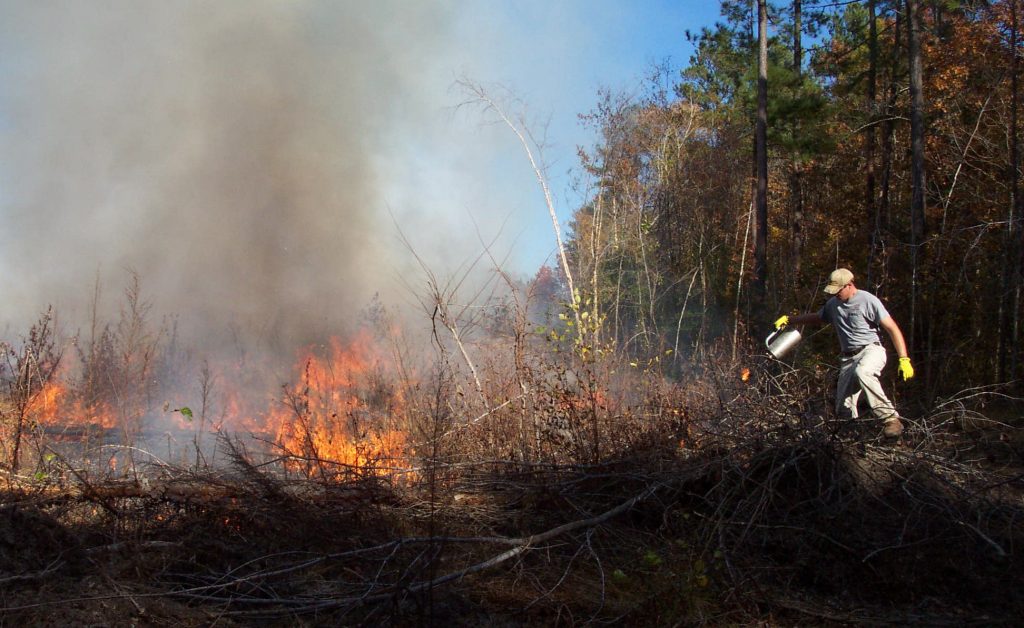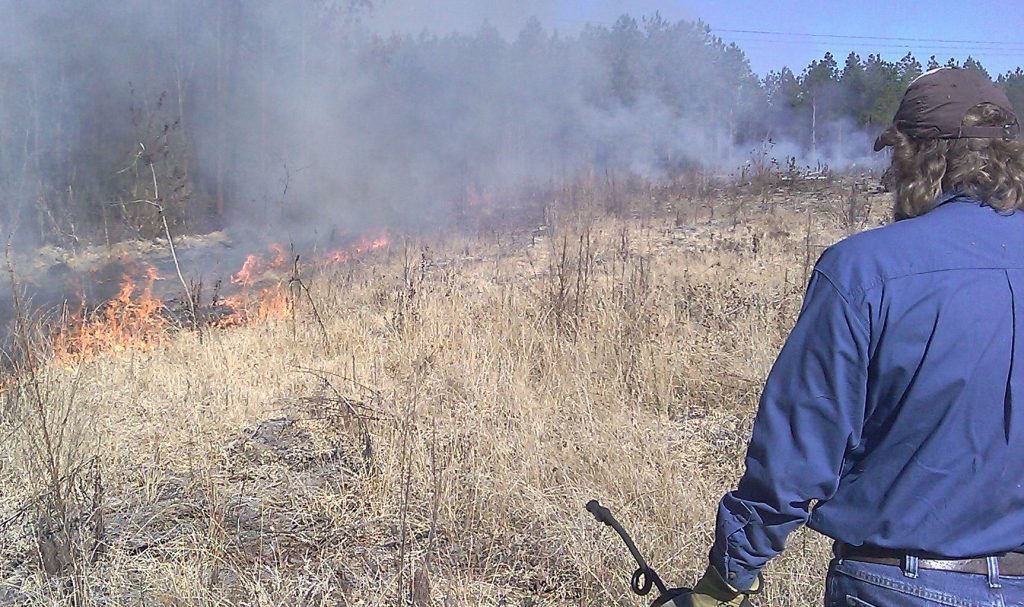
If you want to grow longleaf pine, you need fire. Longleaf is a fire-dependent species. And we want to grow longleaf pine. That is why we clear cut five acres when we did the thinning last winter. A few weeks ago we sprayed to get at the poplars, which had grown from roots and now we are burning. This procedure is called “brown and burn” BTW. My friend Eric Goodman got some longleaf seedlings free. which will go in next spring. Our friends at the Department of Forestry made fire lanes with their tractor. My friends Larry Walker and Frank Meyer did the burning. I am the luckiest man in the world. People always help. Together we are creating a demonstration forest in Brunswick County. It will showcase the best forestry practices for our part of Virginia. It includes already a wonderful stand of loblolly. We will apply different silvicultural practices (various thinning densities, fire, herbicide treatments etc) to show the different results.
More about the forest plan is here & here. Pictures of the thinning are here .

The longleaf are near the edge of their range in southern Virginia, so it is less certain. If the climate changes, however, the range may move north. Longleaf once grew all around the South. Today they are less common because they are harder to grow than loblolly. That is why the State of Virginia is helping us grow them. Longleaf require fire to grow well and are hard to establish. Once established they are a great tree. The only caveat is the long needles (hence long leaf). Ice storms can weigh down the branches and cause damage. Individual longleaf are beautiful trees and a vigorous stand of longleaf is even more beautiful. I won’t live long enough to see my trees mature, but I hope to enjoy their vigorous adolescence.
My experience in forestry has greatly exceeded my expectations. My land has attracted help like a magnet. All I have to do is let people share my dreams and they contribute time and more importantly local knowledge and forestry expertise. Sophisticated people say that people like me are naïve, maybe so. I believe in win-win outcomes and I don’t care if it sounds cliché. The secret of joy is finding ways to give people what they want in the framework of what you want. I don’t know if I get as much as I could, but I am morally certain that I get more than I would in other ways. I find that in my forestry, I find it in my work and I find it generally in life.

I just could not do forestry the way I want to do it w/o all the help I get. It would be simply impossible. They get to use my land, but they use it in ways that I want it to be used. What is important to me is that my trees are growing robustly; the water that runs off the land is crystal clear; the soil is getting better; wildlife abounds. I get to watch the trees grow as long as I live and leave it to the kids after I die. Is there anything else anybody could reasonably want? Maybe a horse when I get to old to walk around comfortably. Mariza can teach me to ride it.
The Nature Conservancy uses fire well in its ecosystem management. Here is a link to a good article.
A good article about fire in southern forests is here.
Also check out the Southern Fire Exchange.
I took the Virginia fire course a couple years ago, so I am officially “qualified” to set fire to the woods. Of course, I wouldn’t dare do it w/o somebody with boots on the ground experience. Information about using fire in forestry is below.
